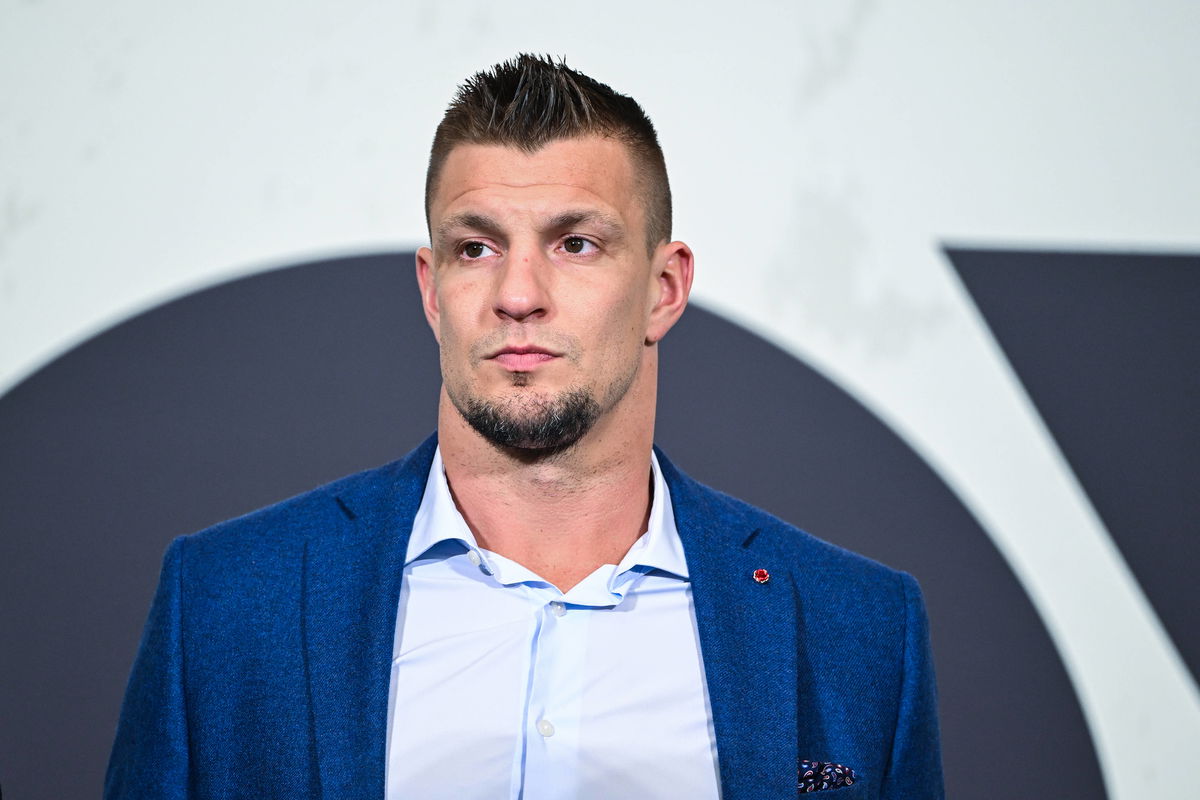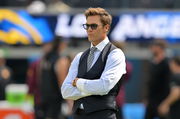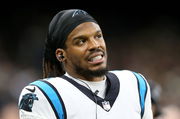
Imago
LA: Super Bowl LIX – Fox News Media Day Rob Gronkowski stands on stage during the Fox Sports Media Day event held at the New Orleans Ernest N. Morial Convention Center in New Orleans, Louisiana on February 6, 2025. Super Bowl LIX will take place Sunday Feb. 9, 2025 between the Kansas City Chiefs and the Philadelphia Eagles. Photo by Anthony Behar/Sipa USA New Orleans New Orleans Ernest N. Morial Con Louisiana USA NOxUSExINxGERMANY PUBLICATIONxINxALGxARGxAUTxBRNxBRAxCANxCHIxCHNxCOLxECUxEGYxGRExINDxIRIxIRQxISRxJORxKUWxLIBxLBAxMLTxMEXxMARxOMAxPERxQATxKSAxSUIxSYRxTUNxTURxUAExUKxVENxYEMxONLY Copyright: xAnthonyxBeharx Editorial use only

Imago
LA: Super Bowl LIX – Fox News Media Day Rob Gronkowski stands on stage during the Fox Sports Media Day event held at the New Orleans Ernest N. Morial Convention Center in New Orleans, Louisiana on February 6, 2025. Super Bowl LIX will take place Sunday Feb. 9, 2025 between the Kansas City Chiefs and the Philadelphia Eagles. Photo by Anthony Behar/Sipa USA New Orleans New Orleans Ernest N. Morial Con Louisiana USA NOxUSExINxGERMANY PUBLICATIONxINxALGxARGxAUTxBRNxBRAxCANxCHIxCHNxCOLxECUxEGYxGRExINDxIRIxIRQxISRxJORxKUWxLIBxLBAxMLTxMEXxMARxOMAxPERxQATxKSAxSUIxSYRxTUNxTURxUAExUKxVENxYEMxONLY Copyright: xAnthonyxBeharx Editorial use only
Belichick traded “one of the greatest guards” he’s ever coached, for… a backup tight end and a mid-round pick? Yes, that happened. But for Rob Gronkowski, the hurt ran deeper than the headlines. He called Rob a “meathead,” sure, but he had also defended the young tight end when the media had a problem with Gronk’s antics.
Watch What’s Trending Now!
The trade went down in late August 2014, just days after the Patriots had blown out the Panthers in a preseason game. Logan Mankins, the team’s offensive anchor and everything the team “would ever want in a football player”, was suddenly shipped off to Tampa Bay. This wasn’t some aging liability on his last legs. Mankins had just finished his sixth Pro Bowl season, had played through torn ligaments, and still ranked among the best guards in football. He was there to protect Tom Brady, who had “a very emotional reaction to what happened.”
Despite everything, the Patriots’ front office saw clear financial logic in trading Mankins. His $10.5 million cap hit dropped to $4.25 million after the move, saving them $6.25 million immediately and another $7 million the next year, with $5.755 million in cap space freed up. The deal also let them defer $4 million in dead money to 2015. In return, New England got tight end Tim Wright and a fourth-round pick—a steep price for locker room stability. And even Brady would find “his calm after a day or two”. And as for Gronk…. He opened up about the hurt—and the cold realization—that followed on an episode of his podcast Dudes on Dudes with Gronk and Jules.
ADVERTISEMENT
“Have you got any Logan stories?” Jules asked. “I still remember to this day when he got traded to the Tampa Bay Buccaneers. When that happened, it was one of the most shocking things I’ve ever seen happen in the NFL, and that’s when I learned that the NFL is a business. And not just a business, it can be a dirty business as well, because Logan Mankins was on that pedestal of one of the greatest guards to play for the New England Patriots. Everyone looked up to him, and then he got traded, and I saw those tears in his eyes… It made me feel really weird that day at practice.” Gronk said.
View this post on Instagram
His words take on extra weight when you consider the company Mankins keeps in NFL cap casualty lore. Elite stars like Darrelle Revis, released by the Jets to clear millions in cap space, Demarcus Ware, cut by the Cowboys, opening around $16 million in cap room, and Ndamukong Suh let go by Miami, similarly for financial reprieve—all exemplify the same ruthless calculus. Safe to say that moment reoriented Gronk’s worldview, and even planted the seed for his own early retirements at 29 and again at 33, choosing personal wellness over relentless grind.
ADVERTISEMENT
And in truth, it revealed the iron-willed man underneath Mankins, who played two years with the Bucs and started 31 games before retiring: a player so tough he was likened to Chuck Norris on that same podcast.
ADVERTISEMENT
What made Logan Mankins the Patriots’ ironman guard
Logan Mankins didn’t just play through pain. He treated it like background noise. In 2011, he tore his right ACL in the season opener against Miami. Then he proceeded to start all 16 games and the playoffs. He only discovered the full extent of the damage during postseason surgery. As if that wasn’t enough, he tore the MCL in his left knee during the divisional round against Denver. Still, he anchored the line through both the AFC Championship and Super Bowl XLVI. Most players would’ve been done for the year. Mankins was simply built differently.
For nine seasons, he gave the Patriots everything, becoming one of their greatest guards. He anchored elite offensive lines, made Pro Bowls, and kept Tom Brady clean, so much so that Brady himself would later say, “I love Logan. Logan was a great friend of mine. Nobody stood for Patriots football more than him.” Yet football can be cruel like that – despite all his toughness and talent, he never lifted the Lombardi Trophy. His career fell right between championship windows, arriving after the early 2000s dynasty and leaving before the next one began. He played in two Super Bowls, both ending in heartbreaking losses.
Top Stories
Tom Brady Makes Career Announcement for Vegas as Pete Carroll Addresses Losing Raiders Locker Room

Dolphins’ Jordyn Brooks Publicly Calls Out Locker Room Over ‘Poor’ Performance Against Steelers

Cam Newton Makes NFL Return Conditions Clear to 32 Teams as Panthers Legend Confirms Retirement Stance

Andy Reid Makes Final Decision on Signing New Chiefs QB After Patrick Mahomes’ ACL Injury

Patrick Mahomes Successfully Undergoes Surgery as Andy Reid Highlights Chiefs QB’s Recovery Plan

This wasn’t just toughness – it was almost comical. He played on borrowed knees while teammates joked he skipped ice baths for it was too pampering. So when New England traded him in 2014, it hit differently. It wasn’t the emotion that stuck – it was the realization that in the NFL, heart matters, but the bottom line matters more. Mankins left more than a legacy of toughness.
ADVERTISEMENT
ADVERTISEMENT
ADVERTISEMENT
ADVERTISEMENT

